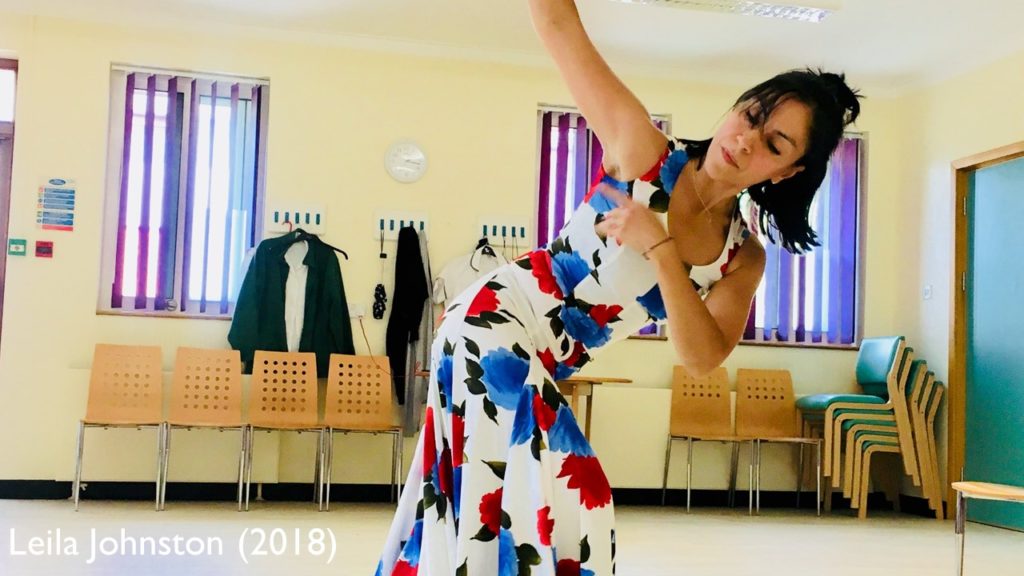
Capacity: Creative Engagement with Mental Health Residents
A Soap Box presentation delivered at the Engage Conference, 13-14 Nov 2018

Derby QUAD’s Creative Wellbeing programme has created strong links with local health and care services over several years. For 2018, the exhibition and programme theme of “Wellbeing” has been used to strengthen these links and explore new opportunities and ways of working.
For 2017, Digital Participatory Artist in Residence Kajal Patel worked with participants from Rethink Derby as well as local artists and creatives, which provided a rich participant pool, where shared learning and practice were developed into an exhibition sharing participant work and displaying in the context of contemporary visual art – a powerful thing for anyone, especially those who live with mental health issues.
So, for the 2018, the Digital Participatory Artist in Residence programme was identified as an opportunity to explore these relationships with a selected participant group – inpatients a Derbyshire inpatient service for residents with acute mental health needs.

Our immediate challenge: What does ‘lacking capacity’ mean?
Section 2 of the Mental Capacity Act 2005 says that “a person lacks capacity in relation to a matter if at the material time he is unable to make a decision for himself in relation to the matter because of an impairment of, or a disturbance in the functioning of, the mind or brain.”
Lacking capacity includes where your ability to make decisions is affected:
• permanently: this is where your ability to make decisions is always affected. This might be because, for example, you have a form of dementia, a learning disability or brain injury. Or,
• in the short term: this means your ability to make decisions changes from day to day. This might be because, for example, you are confused because you’re on medication or because of some mental health conditions, or you are unconscious.
This presented a challenge in relation to the Capacity Assessment.

Capacity Assessments establish, at that moment in time, a resident’s capacity to make an informed decision about themselves. In this instance, it related to giving permission for their work to be used beyond the hospital. This presents several challenges in the documenting process, as well as representing participant voice and creative development.
The assessment aims to establish whether a resident, at that time, has the capacity to give their permission for their work to be used in any capacity beyond the hospital. The assessments can take up to 45 minutes per patient – it is time-consuming and may require additional staffing. It was decided that this would be too big an ask for the nature of the engagement between our artist and residents
So, this meant (Blank Screen):
• No images could be taken to document the workshop/use in the work
• Couldn’t use any of their words
• Couldn’t use any created work

Leila’s work for the residency focused on falling and failing, which seemed to fit well with the concerns and issues faced by the participants. It was decided that the participant engagement would be around the exploration of technology and being creative with digital. The patients in residence varied, but there are often people who are very creative, though may have difficult, negative feelings about creativity and feelings of having ‘failed’ as artists, or potential artists. It’s useful that we are aware of these potential vulnerabilities.
Initially there was an element of Leila’s work which involved presenting participant comments within the exhibition space. Because no capacity assessments were undertaken, this could not be done. So, another theme within Leila’s work was dancers, she worked with local dancer Rosa Cisneros, who used movements originated by the inpatients and staff to create a dance sequence which she then performed. This provided enough ambiguity to not be indicative of any of the participants. With movement being a potential negative trigger for the participants, Rosa took great care in ensuring the vocabulary used was not exaggerated and was participant led.
As a digital artist, Leila provided hands on access to 360 cameras, motion capture equipment and LED light systems. Participants were really taken back with this, not because of the equipment, but because they were being trusted to operate it.
Trust, the humanity of creativity and the up-close nature of the experience had a noticeable effect on the participants. Those who entered the space were withdrawn and quiet. Those that left were energised, confident and excited about engaging with arts and culture further as outpatients.

This experience has highlighted that, within arts and culture, it’s important to remember the positive impact of the act of engaging a participant in creativity, regardless of which Key Performance Indicator they fall under or whether we’ve been able to record it: we don’t need to show it to know that it’s happened.
[…] Cora Glasser, artist and co-founder of Glassball, and in reflection of my previous post on Capacity, we spoke about an aspect of digital participation that isn’t always considered: what are we, […]
[…] in hospital Renal Units, how we individually see work differently, and in my case, speaking on Capacity Assessments: a process when working with inpatient services for residents with acute mental health needs, which […]